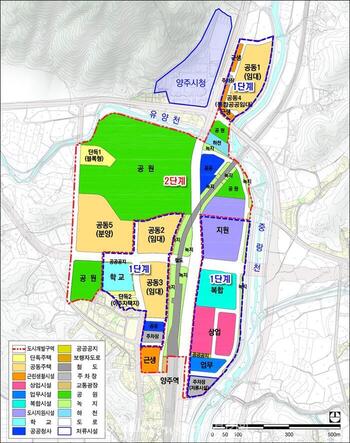의정부을지대병원, 합병증 최소화하는 신 경추수술법 발표
英 저명 신문 ‘The Spinal News International’ 집중 보도
의정부을지대병원, 합병증 최소화하는 신 경추수술법 발표英 저명 신문 ‘The Spinal News International’ 집중 보도
[김일중 기자 = 경기북부/강원] 의정부을지대학교병원 정형외과 이형래 교수가 후두신경통 등 각종 합병증을 최소화하는 제1-2경추 수술의 새로운 테크닉을 발표했다고 밝혔다.
이형래 교수는 ‘Feasibility of lateral mass screw insertion in patients with the risky triad of C1: evaluation of the over-the-arch technique(제1경추 외측괴 나사못 삽입의 위험 3주징을 가진 환자에서 후면아치 위쪽을 삽입점으로 이용한 테크닉의 결과)’ 연구로 제1경추에 나사못을 삽입하기 어려운 경우, 제1경추 외측괴 상방에 나사못을 직접 삽입하는 새로운 수술법을 소개했고, 이 수술법은 영국의 저명 신문인 ‘The Spinal News International’에 보도되며 주목받았다고 했다.
이 수술법은 통상적인 제1경추 나사못 삽입 지점(후방 아치)보다 위쪽(외측괴 상방)에 나사못을 삽입해 수술 후 후두신경통을 최소화하는 것이 특징이라고 전했다.
후방 아치의 두께가 3.5mm 이하인 경우, 제1경추 외측괴 하방의 두께가 3.5mm 이하인 경우, 하방으로 경사진 후방 아치인 경우를 제1경추 나사못 삽입술의 위험요소 3가지(Risky triad of C1)로 규명하고, 지난 2011년부터 2019년까지 환자 60명을 대상으로 새로운 수술법을 적용했으며, 그 결과 새로운 수술법을 적용한 환자에서 척추동맥 손상, 후두신경통 등과 같은 합병증 발생률이 현저히 낮은 것으로 나타났고, 특히 수술 후 후두신경통이 발생한 환자는 없었다고 했다.
의정부을지대병원 정형외과 이형래 교수는 “그동안 제1경추에 나사못을 삽입하기 어려운 경우엔 수술 범위를 확장할 수밖에 없어 다양한 합병증을 불러왔다”며 “이번 연구 결과처럼 후방 아치의 위쪽인 외측괴 상방에 제1경추 나사못을 삽입할 수 있다면 얻을 수 있는 장점이 많다”고 연구 의미를 설명했다.
그동안 제1경추에 나사못을 삽입하기 어려운 경우엔 두경부부터 경추까지 유합 범위를 확장하는 ‘후두경부 유합술’이 이용됐지만, 수술 후 환자의 목 움직임이 제한되거나 전방 주시 기능에 장애가 생기는 등 다양한 합병증이 발생했다고 전했다.
제1-2경추는 뼈가 아주 작고 주변에 척추동맥, 척수, 경동맥 등 주요 신경이 밀접해 있어 고난도 술기가 필요한 수술 부위로, 제1-2경추가 불안정하면 중추신경인 척수가 압박돼 보행장애를 일으키거나 미세한 동작이 어려워지고, 심한 경우 전신마비 등 심각한 합병증을 초래한다고 밝혔다.
* 아래는 위 기사를 '구글 번역'으로 번역한 영문 기사의 [전문]이다. * Below is the [full text] of an English article translated from the above article as'Google Translate'.
Uijeongbu Eulji University Hospital Announces Nerve Spine Surgery Method to Minimize Complications
Intensive coverage of the famous British newspaper ‘The Spinal News International’
[Reporter Il-jung Kim = Northern Gyeonggi/Gangwon] Prof. Hyung-rae Lee of the orthopedic surgery department at Uijeongbu Eulji University Hospital announced that he has announced a new technique for the 1-2 cervical spine surgery that minimizes various complications such as laryngeal neuralgia.
Professor Hyung-rae Lee, 'Feasibility of lateral mass screw insertion in patients with the risky triad of C1: evaluation of the over-the-arch technique When it was difficult to insert a screw into the 1st cervical vertebra, a new surgical method was introduced that inserts the screw directly above the lateral mass of the 1st cervical vertebra. It was reported in 'International' and received attention.
The feature of this surgical method is to minimize postoperative laryngeal neuralgia by inserting the screw above the lateral mass above the normal first cervical screw insertion point (posterior arch).
When the thickness of the posterior arch is less than 3.5mm, the thickness below the lateral mass of the 1st cervical vertebra is less than 3.5mm, and the case of the posterior arch inclined downward as three risk factors (Risky triad of C1) The new surgical method was applied to 60 patients from 2011 to 2019, and as a result, the incidence of complications such as vertebral artery damage and laryngeal neuralgia was significantly lower in patients who applied the new surgical method, especially after surgery. There were no patients with laryngeal neuralgia.
Professor Lee Hyung-rae of the orthopedic surgery department at Uijeongbu Eulji University Hospital said, "In the past, when it was difficult to insert a screw into the first cervical vertebra, the scope of the operation had to be expanded, which caused various complications." “There are many advantages to be gained if the first cervical vertebra screw can be inserted above the lateral mass, above the posterior arch, as in the results of this study,” he explained.
In the past, when it was difficult to insert a screw into the first cervical vertebrae, 'occipital neck fusion' was used to extend the fusion range from the head and neck to the cervical vertebrae. said he did
The 1st and 2nd cervical vertebrae are very small bones and are close to major nerves such as vertebral artery, spinal cord, and carotid artery. When the 1st and 2nd cervical vertebrae are unstable, the central nerve, the spinal cord, is compressed, causing gait disturbances, making fine movements difficult, and in severe cases, serious complications such as general paralysis.
이 기사 좋아요
<저작권자 ⓒ 브레이크뉴스 경기북부 무단전재 및 재배포 금지>

댓글
김일중 기자, 의정부시, 의정부을지대병원, 이형래, 정형외과, 후두신경통, 제1경추, 나사못, The Spinal News International, 척추동맥, 합병증 관련기사목록
|
많이 본 기사
경기북부 많이 본 기사
|






























